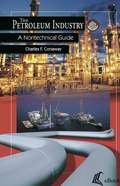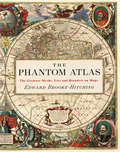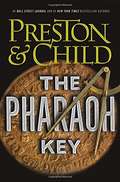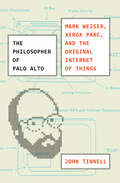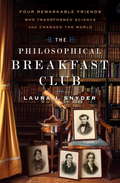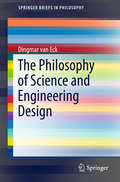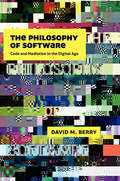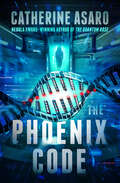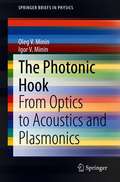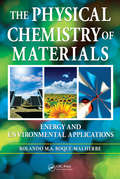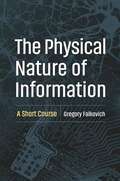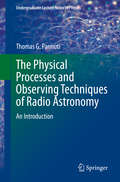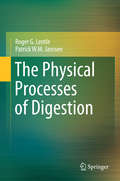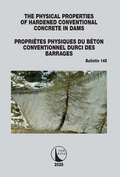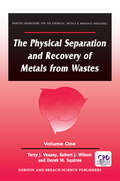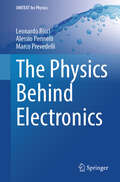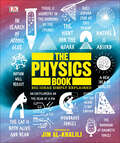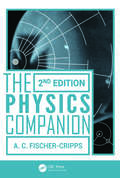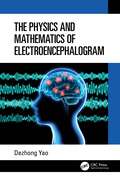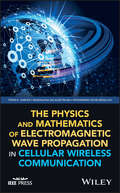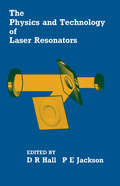- Table View
- List View
The Petroleum Industry: A Nontechnical Guide (Pennwell Nontechnical Ser.)
by Charles F. ConawayEverything from upstream to downstream is covered in this nontechnical overview of the petroleum industry. Organized in a natural chronology, the text begins with the geology and origins of oil and gas formation and moves through the techniques used to find, drill, and produce oil. The author then moves the reader through clear explanations of downstream issues including storage, transportation, and marketing as well as refining and petrochemicals. Special attention is given to the differences between onshore and offshore processes. Features Newcomers will quickly learn petroleumindustry language and concepts Provides cross-training in the other disciplines Easy-to-grasp concepts of technology and processes Points out the distinctions between onshore and offshore operations Includes a comprehensive glossary of industry terms and buzzwords
The Phantom Atlas: The Greatest Myths, Lies And Blunders On Maps
by Edward Brooke-HitchingThe Phantom Atlas is a guide to the world not as it is, but as it was imagined to be. It's a world of ghost islands, invisible mountain ranges, mythical civilizations, ship-wrecking beasts, and other fictitious features introduced on maps and atlases through mistakes, misunderstanding, fantasies, and outright lies. This richly illustrated book collects and explores the colorful histories behind a striking range of real antique maps that are all in some way a little too good to be true. Author Edward Brooke-Hitching investigates the places where exploration and mythology meet, using gorgeous atlas images as springboards for tales of the deranged buccaneers, seafaring monks, heroes, swindlers, and other amazing stories behind cartography's greatest phantoms.
The Phantom Atlas: The Greatest Myths, Lies and Blunders on Maps
by Edward Brooke-HitchingThe Phantom Atlas is an atlas of the world not as it ever existed, but as it was thought to be. These marvellous and mysterious phantoms - non-existent islands, invented mountain ranges, mythical civilisations and other fictitious geography - were all at various times presented as facts on maps and atlases. This book is a collection of striking antique maps that display the most erroneous cartography, with each illustration accompanied by the story behind it. Exploration, map-making and mythology are all brought together to create a colourful tapestry of monsters, heroes and volcanoes; swindlers, mirages and murderers. Sometimes the stories are almost impossible to believe, and remarkably, some of the errors were still on display in maps published in the 21st century. Throughout much of the 19th century more than 40 different mapmakers included the Mountains of Kong, a huge range of peaks stretching across the entire continent of Africa, in their maps - but it was only in 1889 when Louis Gustave Binger revealed the whole thing to be a fake. For centuries, explorers who headed to Patagonia returned with tales of the giants they had met who lived there, some nine feet tall. Then there was Gregor MacGregor, a Scottish explorer who returned to London to sell shares in a land he had discovered in South America. He had been appointed the Cazique of Poyais, and bestowed with many honours by the local king of this unspoiled paradise. Now he was offering others the chance to join him and make their fortune there, too - once they had paid him a bargain fee for their passage... The Phantom Atlas is a beautifully produced volume, packed with stunning maps and drawings of places and people that never existed. The remarkable stories behind them all are brilliantly told by Edward Brooke-Hitching in a book that will appeal to cartophiles everywhere.
The Pharaoh Key (Gideon Crew series)
by Douglas Preston Lincoln ChildDon't miss the this exciting adventure from #1 New York Times-bestselling authors Preston & Child, in which the secrets of a mysterious ancient tablet may point the way to untold treasure-or unspeakable danger. <P><P>"I just want to be crystal clear about this: if it has value, we're gonna steal it. Are you with me?" <P>Effective Engineering Solutions has been inexplicably shut down and the head of the company, Eli Glinn, has all but vanished. Fresh off a diagnosis that gives him only months to live, Gideon Crew is contacted by one of his coworkers at EES, Manuel Garza, who tells him the two have mere hours to collect their belongings before the office closes forever. <P>After years of dedicated service and several high-risk missions, theirs seems like the most ignoble of terminations-until Gideon and Garza happen upon an incredible discovery. <P><P>After centuries of silence, a code-breaking machine at EES has cracked the long-awaited translation of a centuries-old stone tablet, the Phaistos Disc, that dates back to an otherwise completely unknown, ancient civilization. The mysteries of the message itself hint at incredible treasures, and perhaps even a world-altering secret. No one remains at EES to take on this most remarkable mission but Gideon and Garza. <P><P>The two agree to solve the mystery of the disc's message and split the spoils: the perfect parting gift their employer doesn't know he has given. What lies at the end of the trail may save Gideon's life-or bring it to a sudden, shocking close. As Gideon and Garza soon discover, some missions are more dangerous than others. But as Gideon has proved again and again, there's no such thing as too great a risk when you're living on borrowed time. <P><b>A New York Times Bestseller</b>
The Philosopher of Palo Alto: Mark Weiser, Xerox PARC, and the Original Internet of Things
by John TinnellA compelling biography of Mark Weiser, a pioneering innovator whose legacy looms over the tech industry’s quest to connect everything—and who hoped for something better. When developers and critics trace the roots of today’s Internet of Things—our smart gadgets and smart cities—they may single out the same creative source: Mark Weiser (1952–99), the first chief technology officer at Xerox PARC and the so-called “father of ubiquitous computing.” But Weiser, who died young at age 46 in 1999, would be heartbroken if he had lived to see the ways we use technology today. As John Tinnell shows in this thought-provoking narrative, Weiser was an outlier in Silicon Valley. A computer scientist whose first love was philosophy, he relished debates about the machine’s ultimate purpose. Good technology, Weiser argued, should not mine our experiences for saleable data or demand our attention; rather, it should quietly boost our intuition as we move through the world. Informed by deep archival research and interviews with Weiser’s family and colleagues, The Philosopher of Palo Alto chronicles Weiser’s struggle to initiate a new era of computing. Working in the shadows of the dot-com boom, Weiser and his collaborators made Xerox PARC headquarters the site of a grand experiment. Throughout the building, they embedded software into all sorts of objects—coffeepots, pens, energy systems, ID badges—imbuing them with interactive features. Their push to integrate the digital and the physical soon caught on. Microsoft’s Bill Gates flagged Weiser’s Scientific American article “The Computer for the 21st Century” as a must-read. Yet, as more tech leaders warmed to his vision, Weiser grew alarmed about where they wished to take it. In this fascinating story of an innovator and a big idea, Tinnell crafts a poignant and critical history of today’s Internet of Things. At the heart of the narrative is Weiser’s desire for deeper connection, which animated his life and inspired his notion of what technology at its best could be.
The Philosophical Breakfast Club
by Laura J. SnyderThe Philosophical Breakfast Club recounts the life and work of four men who met as students at Cambridge University: Charles Babbage, John Herschel, William Whewell, and Richard Jones. Recognizing that they shared a love of science (as well as good food and drink) they began to meet on Sunday mornings to talk about the state of science in Britain and the world at large. Inspired by the great 17th century scientific reformer and political figure Francis Bacon--another former student of Cambridge--the Philosophical Breakfast Club plotted to bring about a new scientific revolution. And to a remarkable extent, they succeeded, even in ways they never intended. Historian of science and philosopher Laura J. Snyder exposes the political passions, religious impulses, friendships, rivalries, and love of knowledge--and power--that drove these extraordinary men. Whewell (who not only invented the word "scientist," but also founded the fields of crystallography, mathematical economics, and the science of tides), Babbage (a mathematical genius who invented the modern computer), Herschel (who mapped the skies of the Southern Hemisphere and contributed to the invention of photography), and Jones (a curate who shaped the science of economics) were at the vanguard of the modernization of science. This absorbing narrative of people, science and ideas chronicles the intellectual revolution inaugurated by these men, one that continues to mold our understanding of the world around us and of our place within it. Drawing upon the voluminous correspondence between the four men over the fifty years of their work, Laura J. Snyder shows how friendship worked to spur the men on to greater accomplishments, and how it enabled them to transform science and help create the modern world.From the Hardcover edition.
The Philosophical Breakfast Club: Four Remarkable Friends Who Transformed Science and Changed the World
by Laura J. SnyderThe Philosophical Breakfast Club recounts the life and work of four men who met as students at Cambridge University: Charles Babbage, John Herschel, William Whewell, and Richard Jones. Recognizing that they shared a love of science (as well as good food and drink) they began to meet on Sunday mornings to talk about the state of science in Britain and the world at large. Inspired by the great 17th century scientific reformer and political figure Francis Bacon—another former student of Cambridge—the Philosophical Breakfast Club plotted to bring about a new scientific revolution. And to a remarkable extent, they succeeded, even in ways they never intended. Historian of science and philosopher Laura J. Snyder exposes the political passions, religious impulses, friendships, rivalries, and love of knowledge—and power—that drove these extraordinary men. Whewell (who not only invented the word “scientist,” but also founded the fields of crystallography, mathematical economics, and the science of tides), Babbage (a mathematical genius who invented the modern computer), Herschel (who mapped the skies of the Southern Hemisphere and contributed to the invention of photography), and Jones (a curate who shaped the science of economics) were at the vanguard of the modernization of science. This absorbing narrative of people, science and ideas chronicles the intellectual revolution inaugurated by these men, one that continues to mold our understanding of the world around us and of our place within it. Drawing upon the voluminous correspondence between the four men over the fifty years of their work, Laura J. Snyder shows how friendship worked to spur the men on to greater accomplishments, and how it enabled them to transform science and help create the modern world.
The Philosophical Foundations of Modern Medicine
by Keekok LeeAn exploration of the philosophical foundation of modern medicine which explains why such a medicine possesses the characteristics it does and where precisely its strengths as well as its weaknesses lie. Written in plain English, it should be accessible to anyone who is intellectually curious, lay persons and medical professionals alike.
The Philosophy of Science and Engineering Design
by Dingmar Van EckThis book discusses the relationship between the philosophy of science and philosophy of engineering, and demonstrates how philosophers of engineering design as well as design researchers can benefit from the conceptual toolkit that the philosophy of science has to offer. In this regard, it employs conceptual tools from the philosophical literature on scientific explanation to address key issues in engineering design and philosophy of engineering design. Specifically, the book focuses on assessing the explanatory value of function ascriptions used in engineering design and philosophy of technical functions; on elaborating the structure of explanation in engineering design; on assessing the role and value of design representations in engineering design and philosophy thereof; and on elaborating means for the testing of design methods. Presenting a novel and effective approach to tackling key issues in the field, philosophers of engineering and design alike will greatly benefit from this book.
The Philosophy of Software: Code and Mediation in the Digital Age
by D. BerryThis book is a critical introduction to code and software that develops an understanding of its social and philosophical implications in the digital age. Written specifically for people interested in the subject from a non-technical background, the book provides a lively and interesting analysis of these new media forms.
The Phoenix Code
by Catherine AsaroThe Nebula Award–winning author &“continues to dazzle us with brilliance in combining science, romance and adventure.&” —Romantic Times MIT professor Megan O&’Flannery is one of the world&’s leading research scientists on artificial intelligence for androids. Most of her work consists of working with computer simulations, so when the company MindSim gives Megan an opportunity to work with an android, she jumps at the chance. Hidden and secret, an underground compound in the Nevada desert offers Megan a spectacular lab where she can live and work, mostly alone except for robotic assistants—and the android. Although it appears physically indistinguishable from a human man, Megan realizes she has a lot of work ahead if he is ever to think and act like a human, let alone the superspy that MindSim wants him to be. She loosens the controls on his behavior, allowing the android—who soon chooses the name Ander—the freedom of more independent thought. However, when Raj Sundaram, the reclusive genius of robotics, arrives at the compound to work with the android, Ander&’s behavior takes a strange turn, causing Megan to distrust Raj. As Ander&’s development spins out of control, he throws the project into chaos, going rogue even as he becomes stronger—and more dangerously human. &“This novel is clearly science fiction first with a dynamic climax that will stun the unsuspecting audience who will fail to break The Phoenix Code before Ms. Asaro reveals the ending of this keeper.&” —Painted Rock Reviews &“Cinematic energy and the ease and confidence of a seasoned bestseller.&” —SFReviews.net
The Photonic Hook: From Optics to Acoustics and Plasmonics (SpringerBriefs in Physics)
by Oleg V. Minin Igor V. MininThis book describes the recently-discovered artificially curved light beam known as the photonic hook. Self-bending of light, a long-time goal of optical scientists, was realized in 2007 with the Airy beam, followed by the first demonstration of the photonic hook by the authors of this book and their collaborators in 2015 and experimentally in 2019. The photonic hook has curvature less than the wavelength, along with other unique features described in this book that are not shared by Airy-like beams, and so deepens our understanding of light propagation. This book discusses the general principles of artificial near-field structured curved light and the full-wave simulations of the photonic hook along with their experimental confirmation. The book goes on to show how the photonic hook has implications for acoustic and surface plasmon waves and as well as applications in nanoparticle manipulation.
The Physical Chemistry of Materials: Energy and Environmental Applications
by Rolando Roque-MalherbeIn recent years, the area dealing with the physical chemistry of materials has become an emerging discipline in materials science that emphasizes the study of materials for chemical, sustainable energy, and pollution abatement applications. Written by an active researcher in this field, Physical Chemistry of Materials: Energy and Environmental Appl
The Physical Nature of Information: A Short Course
by Gregory FalkovichApplications of information theory span a broad range of disciplines today. This book presents a unified treatment of the subject for students and practitioners in the sciences. It teaches the tools universally used by physicists working on quantum computers and black holes, engineers designing self-driving cars, traders perfecting market strategies, chemists playing with molecules, biologists studying cells and living beings, linguists analyzing languages, and neuroscientists figuring out how the brain works. No matter what area of science you specialize in, The Physical Nature of Information unlocks the power of information theory to test the limits imposed by uncertainty. Provides a panoramic approach to information theory Draws on examples from physics, engineering, biology, economics, and linguistics Applications range from thermodynamics and statistical mechanics to dynamical chaos, information and communication theories, and quantum information Includes materials for lectures and tutorials along with exercises with detailed solutions Can be used to design a one-semester introductory course Ideal for self-study by graduate students and advanced undergraduates Invaluable for scholars seeking new research opportunities
The Physical Processes and Observing Techniques of Radio Astronomy: An Introduction (Undergraduate Lecture Notes in Physics)
by Thomas G. PannutiThis is a textbook for undergraduate courses on radio astronomy. Written by an active professor and researcher in the field, it begins by explaining why conducting observations at radio frequencies is so important, then reviews essential physics concepts corresponding to a sophomore-level curriculum or higher. Next, the book introduces students to single dish telescopes and interferometers. The most commonly encountered emission mechanisms seen in radio astronomy are then explained, along with examples of astronomical sources broadly divided into the types of sources seen in galactic and extragalactic observations. Each chapter provides examples and exercises suitable for homework assignments. Also included is an appendix of useful supplementary material. Altogether, the book is a comprehensive, yet digestible starting point for physics and astronomy undergraduates looking to understand the basics of radio astronomy.
The Physical Processes of Digestion
by Roger G. Lentle Patrick W.M. JanssenFood research (and funding) is becoming more and more focused on health. While researchers and product developers have made great strides in food engineering, there needs to be increased focus on what happens when the food is actually digested. How is the food absorbed? Do the benefits remain? Digestion is a complex topic, and this will be the first book aimed at food researchers. Authored by a physiologist and a food engineer, the book will be a welcome addition to the literature.
The Physical Properties of Hardened Conventional Concrete in Dams / Propriétes Physiques du Béton Conventionnel Durci des Barrages: ICOLD Bulletin 145 (ICOLD Bulletins Series)
by CIGB ICOLDICOLD Bulletin 145, The Physical Properties of Hardened Conventional Concrete in Dams, provides a comprehensive treatise on the physical properties of hardened conventional concrete for dams, refreshing the partial information. Most of the book addresses physical properties of mass concrete used most frequently in the design and analysis of concrete dams and appurtenant structures. These include strength, elastic, creep, shrinkage and thermal properties, permeability, and frost resistance. This Bulletin aims, for each property considered, to show typical behaviour, factors influencing it, methods for experimental determination, and, last but not least, methods to introduce the properties in mathematical models to be utilized both for design and observation.Le Bulletin 145 de la CIGB, Propriétes Physiques du Béton Conventionnel Durci des Barrages, fournit un traité complet sur les propriétés physiques du béton conventionnel durci pour les barrages, actualisant les informations partielles. La majeure partie du livre traite des propriétés physiques du béton de masse utilisé le plus fréquemment dans la conception et les analyses des barrages en béton et des structures annexes. Ceux-ci incluent la résistance, l'élasticité, le fluage, le retrait et les propriétés thermiques, la perméabilité et la résistance au gel. Ce Bulletin vise, pour chaque propriété considérée, à montrer le comportement typique, les facteurs qui l'influencent, les méthodes de détermination expérimentale et, enfin et surtout, les méthodes pour introduire les propriétés dans les modèles mathématiques à utiliser à la fois pour la conception et l'observation.
The Physical Separation and Recovery of Metals from Waste, Volume One
by Alan VeaseyThis book deals with the physical processes used for the separation of secondary metals from waste sources. The introduction briefly considers the history of the secondary metals industries, defines the terms used in materials recycling and discusses the potential for resource recovery and improved processing. A comprehensive survey is given of the
The Physics Behind Electronics (UNITEXT for Physics)
by Leonardo Ricci Alessio Perinelli Marco PrevedelliThis book is not simply about electronics but rather a thorough exploration of physics. Instead of isolating electronics as an art, its primary goal is to explain the physical principles behind electronic circuits and how they are applied practically. Electronics provides a framework for understanding physics, and vice versa.It is intended for advanced undergraduate or graduate students in physics or related fields who have a basic grasp of electromagnetism and calculus. It also caters to individuals with practical electronics knowledge looking to deepen their understanding of often overlooked concepts.While traditional textbooks treat electronics as a set of techniques, the growing availability of affordable acquisition boards and user-friendly software has diminished the need for expertise in circuit design. Nonetheless, physicists still need to comprehend concepts like stability, impedance matching, noise, and the advantages and limitations of signal sampling.Starting with linear time-invariant systems and feedback, the book progresses to designing circuits using operational amplifiers and oscillators, covering stability and dissipation. It also delves into the Nyquist-Shannon theorem and the basics of digital electronics, emphasizing state-sensitive and clock-sensitive operators. Additionally, it offers an overview of electronic devices facilitating analog-to-digital conversion.The book concludes by examining scenarios involving high frequencies where wires act as waveguides and addressing noise sources from thermal agitation and the corpuscular nature of current. Theoretical concepts are reinforced with solved exercises, and practical "in-the-lab" sections guide readers through experiments using affordable kits and instruments, requiring minimal electronic prototyping knowledge.
The Physics Behind Semiconductor Technology
by Albrecht WinnackerThis textbook teaches the physics and technology of semiconductors, highlighting the strong interdependence between the engineering principles and underlying physical fundamentals. It focuses on conveying a basic understanding of the physics, materials, and processes involved in semiconductor technology without relying on detailed derivations. The book features separate comments on the key physical principles covered, allowing the reader to quickly grasp the take-home message. Chapter-end questions and answers round out this compact book, making it a helpful and dependable resource for physicists, electrical engineers, and materials scientists working with electronic materials. Aimed at upper-level undergraduate students and written by an author with extensive experience in both industry and academia, this textbook gives physicists the opportunity to learn about the materials and technology behind semiconductors, while providing engineers and materials scientists a deeper understanding of the physics behind the technology.
The Physics Book: Big Ideas Simply Explained (DK Big Ideas)
by DKExplore the laws and theories of physics in this accessible introduction to the forces that shape our universe, our planet, and our everyday lives.Using a bold, graphics-led approach, The Physics Book sets out more than 80 of the key concepts and discoveries that have defined the subject and influenced our technology since the beginning of time. With the focus firmly on unpacking the thought behind each theory—as well as exploring when and how each idea and breakthrough came about—five themed chapters examine the history and developments in specific areas such as Light, Sound, and Electricity. Eureka moments abound: from Archimedes' bathtub discoveries about displacement and density, and Galileo's experiments with spheres falling from the Tower of Pisa, to Isaac Newton's apple and his conclusions about gravity and the laws of motion. You'll also learn about Albert Einstein's revelations about relativity; how the accidental discovery of cosmic microwave background radiation confirmed the Big Bang theory; the search for the Higgs boson particle; and why most of the universe is missing. If you've ever wondered exactly how physicists formulated—and proved—their abstract concepts, The Physics Book is the book for you.Series Overview: Big Ideas Simply Explained series uses creative design and innovative graphics along with straightforward and engaging writing to make complex subjects easier to understand. With over 7 million copies worldwide sold to date, these award-winning books provide just the information needed for students, families, or anyone interested in concise, thought-provoking refreshers on a single subject.
The Physics Companion
by Anthony C. Fischer-CrippsGet Up to Speed on PhysicsUpdated and expanded with new topics, The Physics Companion, 2nd Edition offers a unique and educational approach to learning physics at a level suitable for first-year science students. This new edition expands the presentation to include senior topics, such as statistical mechanics, quantum physics, and nuclear physics.
The Physics and Mathematics of Electroencephalogram
by Dezhong YaoThis book focuses on a systematic introduction to the knowledge of mathematics and physics of electroencephalogram (EEG) and discusses an in-depth application of EEG and the development of new methods and technologies for mining and analyzing EEG.The Physics and Mathematics of Electroencephalogram offers a systematic overview of the technology for brain function and disease. It covers six parts: background knowledge of EEG, EEG forward problems, high-resolution EEG imaging, EEG inverse problems, EEG reference electrode, and EEG cloud platform. The author reviews the critical technologies in brain function and disease, such as EEG sourcing, EEG imaging, and EEG reference electrode standardization technique. The book’s aim is to clarify the mechanism of EEG from the perspective of physics, mathematics, and engineering science to help multidisciplinary readers better understand and use EEG information more effectively.This book can be used as reference for researchers in the fields of neuroengineering, cognitive neuroscience, neurology, psychiatry, applied mathematics, and brain-like intelligence.
The Physics and Mathematics of Electromagnetic Wave Propagation in Cellular Wireless Communication (Wiley - IEEE)
by Tapan K. Sarkar Magdalena Salazar Palma Mohammad Najib AbdallahAn important resource that examines the physical aspects of wireless communications based on mathematical and physical evidence The Physics and Mathematics of Electromagnetic Wave Propagation in Cellular Wireless Communicationdescribes the electromagnetic principles for designing a cellular wireless system and includes the subtle electromagnetic principles that are often overlooked in designing such a system. This important text explores both the physics and mathematical concepts used in deploying antennas for transmission and reception of electromagnetic signals and examines how to select the proper methodology from a wide range of scenarios. In this much-needed guide, the authors—noted experts in the field—explore the principle of electromagnetics as developed through the Maxwellian principles and describe the properties of an antenna in the frequency domain. The text also includes a review of the characterization of propagation path loss in a cellular wireless environment and examines ultrawideband antennas and the mechanisms of broadband transmission of both power and information. This important resource: Includes a discussion of the shortcomings of a MIMO system from both theoretical and practical aspects Demonstrates how to deploy base station antennas with better efficiency Validates the principle and the theoretical analysis of electromagnetic propagation in cellular wireless communication Contains results of experiments that are solidly grounded in mathematics and physics Written for engineers, researchers, and educators who are or plan to work in the field, The Physics and Mathematics of Electromagnetic Wave Propagation in Cellular Wireless Communicationoffers an essential resource for understanding the principles underpinning wireless communications.
The Physics and Technology of Laser Resonators
by Denis Hall P.E. JacksonComprehensive yet concise, The Physics and Technology of Laser Resonators presents both the fundamentals and latest developments in laser resonator technology, including specific case studies. The book covers various types of resonators, including unstable, ring laser, and multifold laser. It also discusses numerical resonator calculations and laser beam analysis. This reference will be of value and interest both to newcomers to the field and to professional engineers wishing to update their knowledge.
